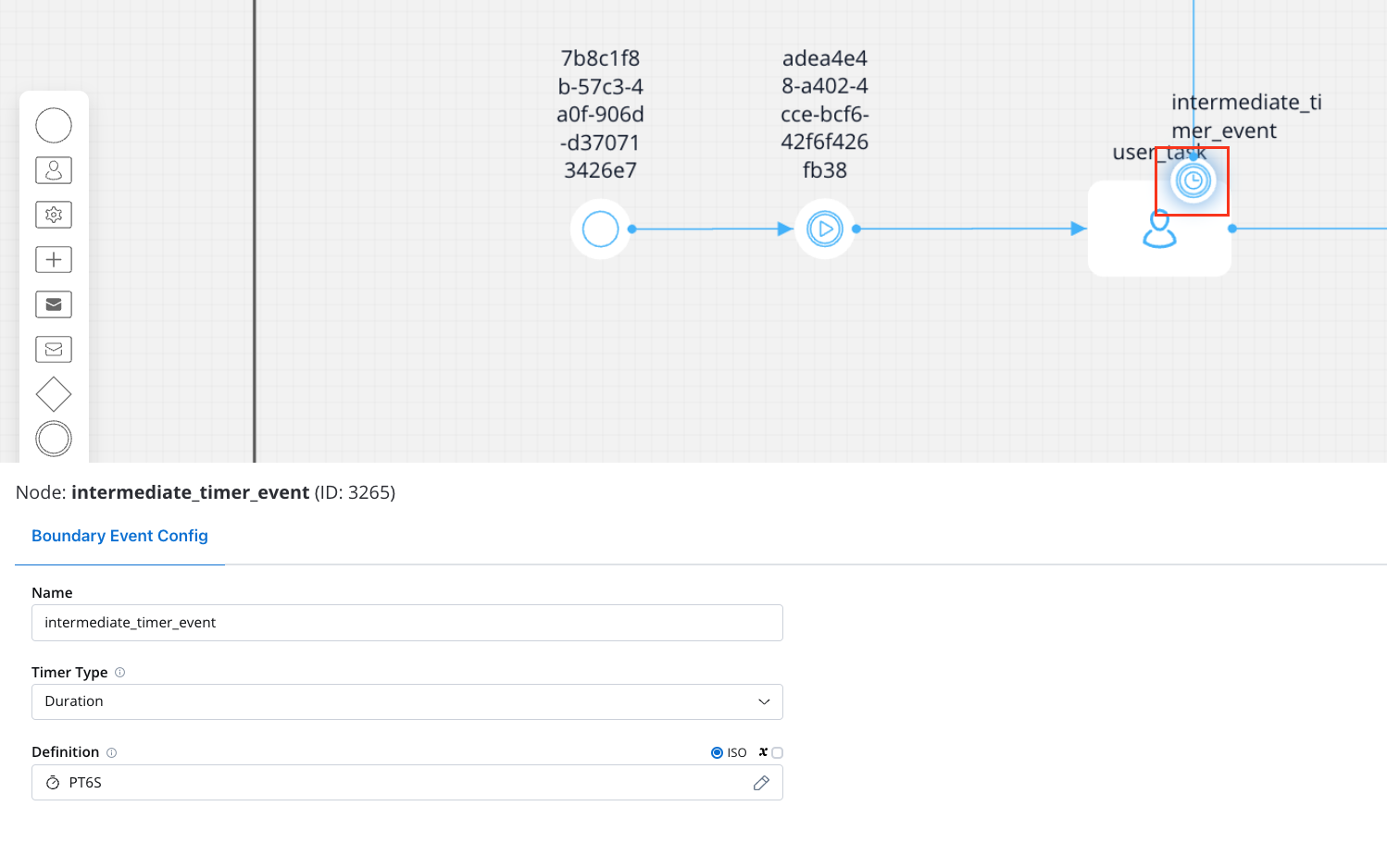Timer boundary event - interrupting
A Timer Boundary Event is an event attached to a specific activity (task or subprocess) that is triggered when a specified time duration or date is reached. It can interrupt the ongoing activity and initiate a transition.
Configuration
For Timer Boundary Events - Interrupting, the following values can be configured:| Field | Validations | Accepted Values |
|---|---|---|
| Definition | Mandatory | ISO 8601 formats (date/duration) |
| Process param |

General rules
- When the token enters the parent activity, a scheduler is set, and it waits for the timer event to be triggered.
- When the timer is triggered, the ongoing activity is terminated, and the process continues with the defined transition.
Timer boundary event - non-interrupting
A Timer Boundary Event is an event attached to a specific activity (task or subprocess) that is triggered when a specified time duration or date is reached. It can trigger independently of the ongoing activity and initiate a parallel path.
Configuration
For Timer Boundary Events - Non-Interrupting, the following values can be configured:| Field | Validations | Accepted Values |
|---|---|---|
| Definition | Mandatory | ISO 8601 formats (date/duration) |
| Process param |
General rules
- When a token arrives at a node with a Timer Boundary Event - Non-Interrupting associated:
- A trigger is scheduled, but the current token execution remains unaffected.
- When the token enters the parent activity, a scheduler is set, and it waits for the timer event to be triggered.
- If the timer is a cycle, it is rescheduled for the specified number of repetitions.
- The scheduler is canceled if the token leaves the activity before it is triggered.

